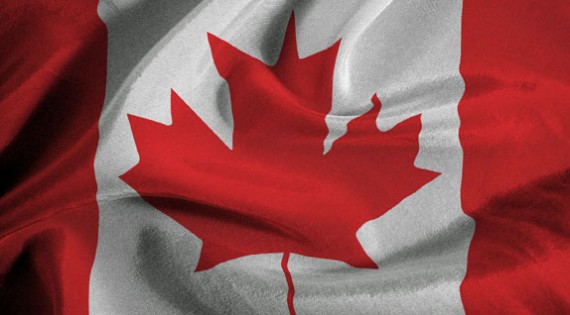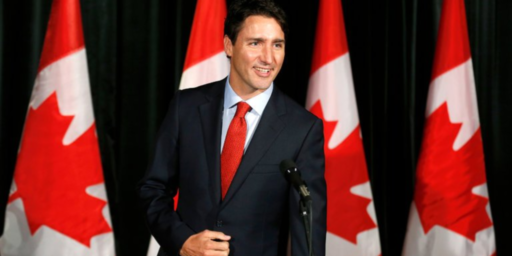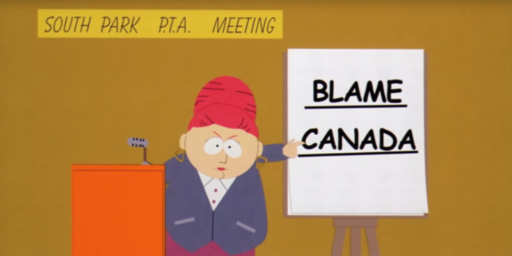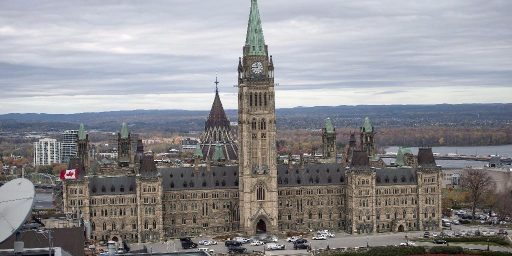Electoral Reform Coming to the Great White North?
Will Canada ditch FPTP?
 One of the promises in the Liberal Party’s manifesto is replacing the first past the post electoral system in Canada (see the CBC: Justin Trudeau vows to end 1st-past-the-post voting in platform speech). If Trudeau is serious, however, he needs to get going as per the following (also via the CBC): Justin Trudeau’s electoral reform plan needs to ‘get going’.
One of the promises in the Liberal Party’s manifesto is replacing the first past the post electoral system in Canada (see the CBC: Justin Trudeau vows to end 1st-past-the-post voting in platform speech). If Trudeau is serious, however, he needs to get going as per the following (also via the CBC): Justin Trudeau’s electoral reform plan needs to ‘get going’.
Of the questions on the table are whether the move would be towards the alternative vote (that voters in the UK rejected a while back and is currently used to elect the first chamber in Australia) or towards proportional representation.
Of course, as the analysis piece I linked above notes, the Liberals as a caucus may well be less interested in reform now that the current system has produced a parliamentary majority for them.
A key problem with the Canadian system in terms of representativeness is pretty clear when one considers that majority, however: they won 184 seats out of 334 (55%) seats but only won 39.5% of the popular vote. This shows pretty clearly how FPTP can do a very poor job of actually representing the views of the populace (another example would be the fact that in 2012 the Democratic Party won more votes nationally in the US, but the Republicans won more seats).
If Canada does go forward with a reform process I hope that the US media pays attention–not so much because I think reforms in Canada will go very far in terms of leading to what I think are needed reforms in the US, but because it may at least start the process of letting American know that, yes, there are more than one way to run elections. At the moment the one rule about electoral reform in the United States is that no one talks about electoral reform.





We can’t talk about electoral reform because as you know, Steve, the most perfect form of voting was given to us 200 years ago by the Founders (Blessed Be Them ) in that most Holy Document, the US Constitution, so there’s no point discussing the merits of any other way of voting.
I’m old enough to remember when aspiring AAG Lani Guinier was banished to the outer regions for even suggesting that FPTP voting should be changed so to allow for greater minority representation in the South.
Indeed, one of the reasons we don’t talk about electoral reform is precisely because certain people have gamed the current system and don’t want to have to try to game another system. But then, you probably know that.
@stonetools: And what is especially amazing is that FPTP isn’t in the Constitution.
And yes: I am hardly surprised that elected officials oppose discussing electoral reform. What i find frustrating is that most Americans, even well-educated ones, typically have no concept of electoral systems beyond our own. It makes even a casual conservation impossible.
What I hope is that more Americans start to realize that there are multiple ways of viewing liberal democracy rather than just one, pure, legitimate form (ours).
I also think that here in the United States consensus has broken down sufficiently that FPTP isn’t remotely democratic let alone liberal but that’s the stuff of a different post.
The 40%/50+% thing wouldn’t be problematic if it were the result of an IRV or somesuch. Canada’s persistent problems in this regard should be cause for alarm, though. The voters clearly want a multiparty system that the current model is inefficient for. Also, the UK. It seems to me that an IRV would alleviate the problem a great deal without going too far into Perpetual Coalition Government territory. Would have in the UK, too, but they emphatically didn’t want it.
As far as the US goes, the best place to start – it seems to me – is with measures at the state level. Things have been accomplished here, with California’s blanket primaries and Maine trying to figure out a way to correct its election inefficiencies. Nebraska, of course, has only one house and non-partisan elections.
These things are harder to accomplish at the national level, which is where a lot of the focus seems to be. States seem to be reluctant to deviate from the norm on how national representatives are selected, though some states do have run-offs for national as well as state elections. I’d prefer IRV, but I’ll take what we can get.
From my perspective, at least a part of the problem focuses on the impractical. I think people tune out when the conversation often opens up with “Wouldn’t it be great if we had a system that was entirely different from ours?” that both (a) scares people off and/or (b) is simply impossible to accomplish.
Not that it can’t be interesting talking about whether we should or shouldn’t have a senate, or how nice it would be to have fusion tickets or this or that. I certainly like to talk about how great it would be if we had thousands rather than hundreds of representatives. But the time spent talking about that isn’t spent talking about more practical and modest reforms such as IRV or MMD.
(And MMD should be talked more about on the state level anyway, as its less practical at the national level. But everybody likes to think nationally, counterproductively sometimes.)
@Dave Schuler:
Setting aside the merits of FPTP for the moment, I am finding that the current complete gridlock in Congress is causing at least some of my acquaintances to start wondering whether coalition government might serve the US better than 2-party monopoly. That would have been unthinkable a couple of decades ago, so maybe there’s hope.
@Dave Schuler:
I would love to think this is true, but I am not seeing it. Why do you think this is the case?
Of COURSE Americans talk about electoral reform.
In Gallup polls since 1944, only about 20% of the public has supported the current system of awarding all of a state’s electoral votes to the presidential candidate who receives the most votes in each separate state (with about 70% opposed and about 10% undecided).
Support for a national popular vote is strong among Republicans, Democrats, and Independent voters, as well as every demographic group in every state surveyed recently. In the 41 red, blue, and purple states surveyed, overall support has been in the 67-81% range – in rural states, in small states, in Southern and border states, in big states, and in other states polled.
The U.S. Constitution says
“Each State shall appoint, in such Manner as the Legislature thereof may direct, a Number of Electors . . .”
The U.S. Supreme Court has repeatedly characterized the authority of the state legislatures over the manner of awarding their electoral votes as “plenary” and “exclusive.”
The National Popular Vote bill would guarantee the presidency to the candidate who receives the most popular votes in the country.
Every vote, everywhere, would be politically relevant and equal in every presidential election. No more distorting and divisive red and blue state maps of pre-determined outcomes. There would no longer be a handful of ‘battleground’ states where voters and policies are more important than those of the voters in 80%+ of the states that have just been ‘spectators’ and ignored after the conventions.
The National Popular Vote bill would take effect when enacted by states possessing a majority of the electoral votes—270 of 538.
All of the presidential electors from the enacting states will be supporters of the presidential candidate receiving the most popular votes in all 50 states (and DC)—thereby guaranteeing that candidate with an Electoral College majority.
The bill has passed 33 state legislative chambers in 22 rural, small, medium, large, red, blue, and purple states with 250 electoral votes. The bill has been enacted by 11 jurisdictions with 165 electoral votes – 61% of the 270 necessary to go into effect.
http://www.NationalPopularVote.com
@toto:
A very small number, however.
@Steven L. Taylor: I think that’s right in the overall, but the electoral college is kind of the exception. That’s not a case of wide majorities of the population knowing there are alternatives. They know, and they support the alternative. They just can’t do much about it.
@Trumwill: Fair enough. (Although even that doesn’t get discussed all that much).
Supporters can write their legislators via http://www.NationalPopularVote.com and discuss the National Popular Vote bill. The more exposure and discussion the reform has, the more support will build for it.